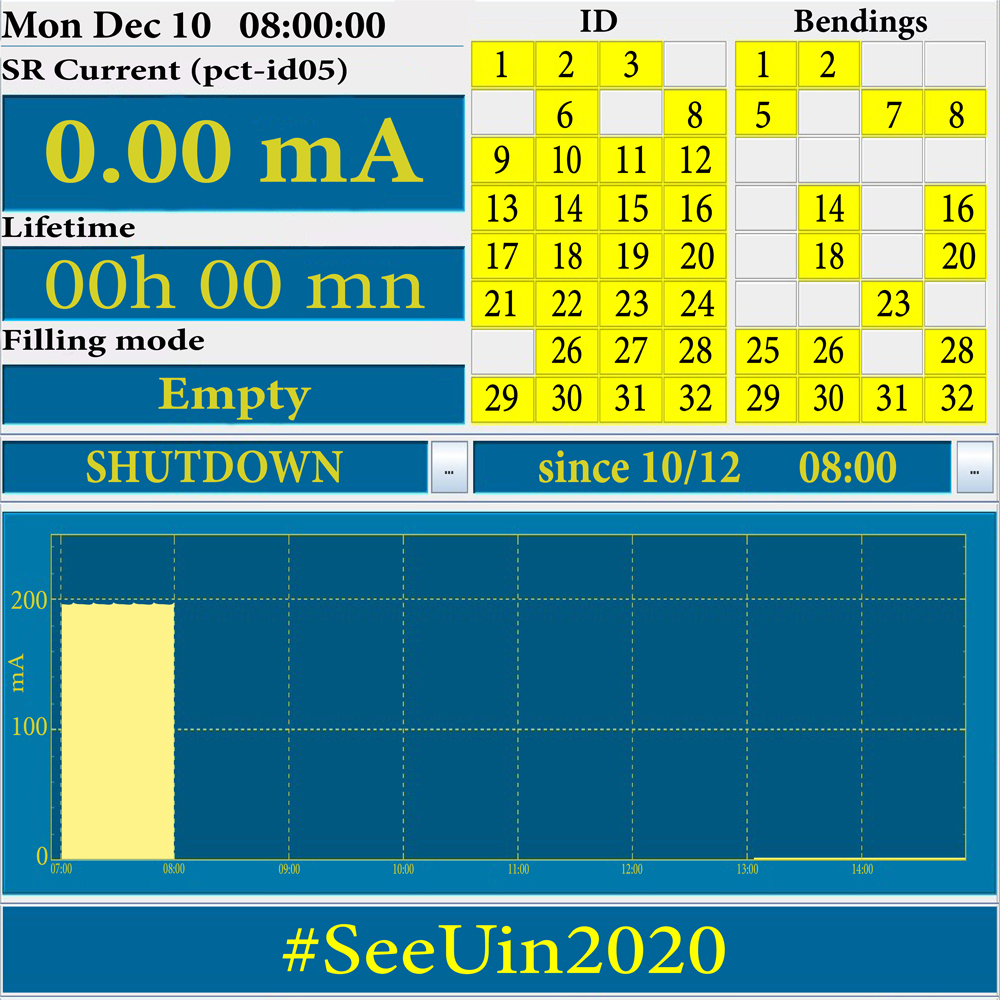On 10 December, 2018, the ESRF stopped the beam for the last time in the original storage ring. Now begins the 20-month shutdown, which will see the dismantling of the storage and the installation of a new and revolutionary X-ray source, EBS. But what does it mean in practical terms? What’s going to happen now? See below for our quick guide to the very long shutdown.
10 December 2018, 08:00. The beam is killed and the stopwatch begins for 20 months of dismantling and moving the existing storage ring, then installing and commissioning the new EBS machine.

Safety first. Once the beam is switched off, the radio-protection engineers measure radiation levels inside the tunnel and ensure that it is safe to enter and work in the area. Next, all the electrical equipment is disconnected inside the storage ring, booster and radio-frequency cavities. The fluids and cryogenic networks are drained and the storage ring and front ends will be released from vacuum and brought back up to atmospheric pressure.
Dismantling begins. Some components will be recovered to be re-used in the new machine, for example diagnostics equipment like beam-loss detectors. For components not being re-used, each piece will be individually dismantled and tested before it can leave the site. Then the pipes and cables will be removed. Cell by cell, the concrete roof will be removed, then each girder, insertion device and radio-frequency cavity removed with the help of three overhead cranes. Dismantling will take about 3 months.
Spring cleaning. Each cell will be prepared for the new girders. First, the old girder supports and concrete pillars will be removed and the trenches in the floor will be filled in. The cell will be cleaned and painted, then the steel support plates for the new girders will be glued to the ground.
Installation. The new girders will be installed in the tunnel from March to November using special gantries able to bear their impressive weight of 12 tonnes. There are three entry zones to the tunnel and no room for manoeuvring inside. The girders, of which only 1/4 are standard, need to be installed in a specific order. A girder transport module in the ring will roll the girders to within 1 cm of their final positions.
Alignment. The girders will be finely aligned and connected together, the front ends installed, pipes and cabling connected, and the ring put under vacuum.
Wiring up. Each component then needs to be cabled to the technical zone on the inside of the ring. Around 50,000 connections will be made and tested.
Commissioning. The equipment and software will be debugged, beam will be injected and the machine tuned to ensure that the beam is stable. This will take 3 months. In March 2020, the beamlines will be commissioned to ensure that they can take beam, with a return to user-service mode expected in August 2020.
Top picture: ESRF/Stef Candé